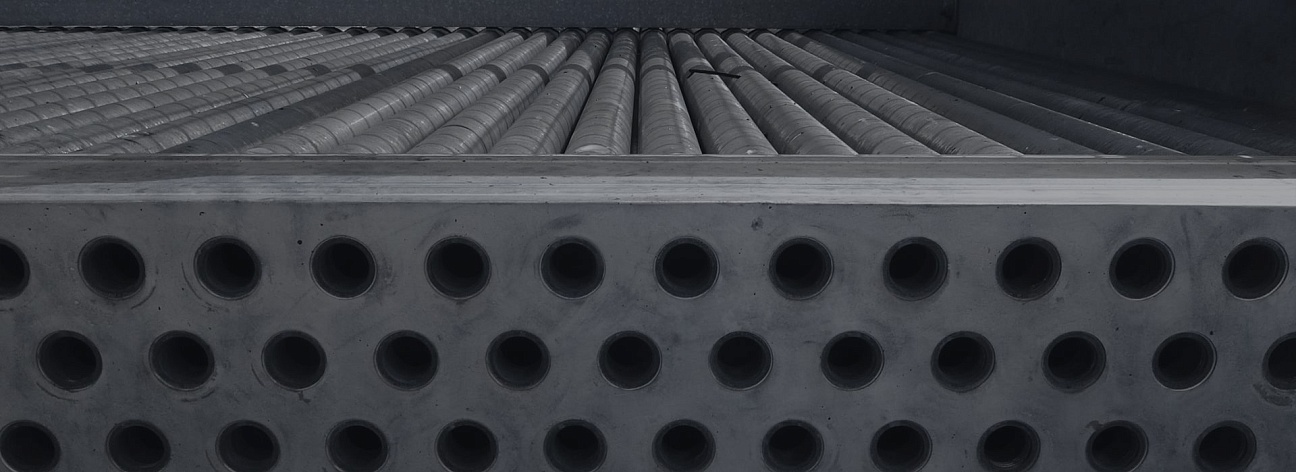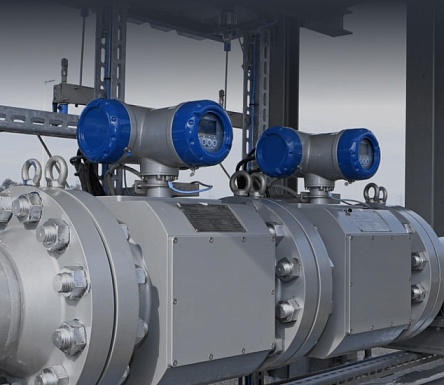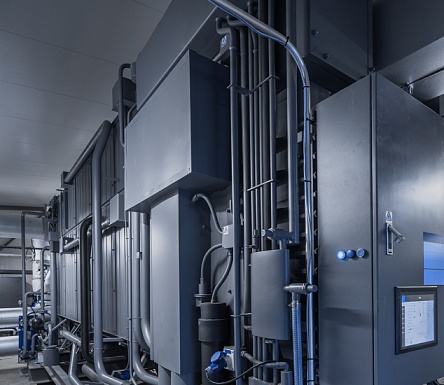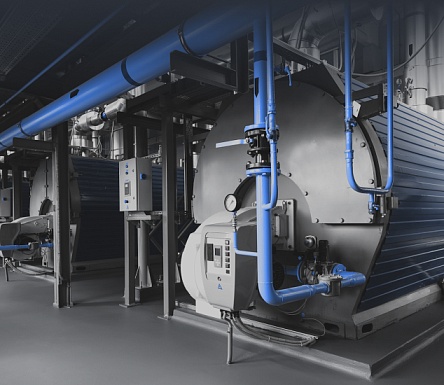Installations providing heat recovery of outgoing flue gases with partial condensation of water vapor. Their installation is possible on both power and hot water boilers.


MAIN TYPES OF FLUE GAS CONDENSERS
DIRECT CONTACT FGC
The direct contact flue gas cooler works by spraying water into the flue gases, creating a large heat exchange surface. Cold water is supplied from above, and the flue gases are supplied from below through a layer of packing. Heat exchange with water occurs on the surface of this packing. In this case, the water wets the packing, and its heat exchange surface becomes equal to the surface of the packing elements. As a result, cooled gases are discharged from above, and hot water is collected from below.
It is important to note that forced draft is required for the combustion products to pass through the economizer.
SPRAY&SURFACE FGC
Spray and surface flue gas coolers have been developed to remove restrictions on the quality of heated water. Installation of an intermediate heat exchanger to the FGC eliminates direct contact of gases and water heated for heat supply purposes. The intermediate heat exchanger can be integrated into the body of the direct contact FGC or mounted separately, depending on the boiler capacity and the performance of the heat recovery unit.
A significant disadvantage of direct and spray & surface FGC, in which water is used as a heat carrier, is the relatively low temperature of its heating. In addition, water heated directly by flue gases absorbs carbon dioxide and oxygen from combustion products and can acquire corrosive-aggressive properties.
To prevent corrosion, it is necessary to thermally deaerate water in atmospheric thermal or vacuum deaerators.
SURFACE HEAT EXCHANGERS
A radical way to eliminate the above-mentioned difficulties is to use surface heat exchangers for deep cooling of exhaust gases. The heat exchange surface of condensing heat exchangers is much more developed compared to conventional economizers and, as in contact heat exchangers, amounts to hundreds of square meters per 1 m3 of the volume of the apparatus.
The coefficients of heat transfer from flue gases to heating surfaces during deep cooling with condensation of water vapor from gases, are significantly higher than the coefficients of convective heat transfer and are competitive with the heat transfer coefficients of direct contact FGC and spray & surface FGC.
In terms of simplicity of design and manufacture, condensing surface heat exchangers have an advantage. In terms of heat exchange intensity, compactness, and aerodynamic resistance, both types of heat exchangers (spray & surface and direct contact) are approximately equivalent.



